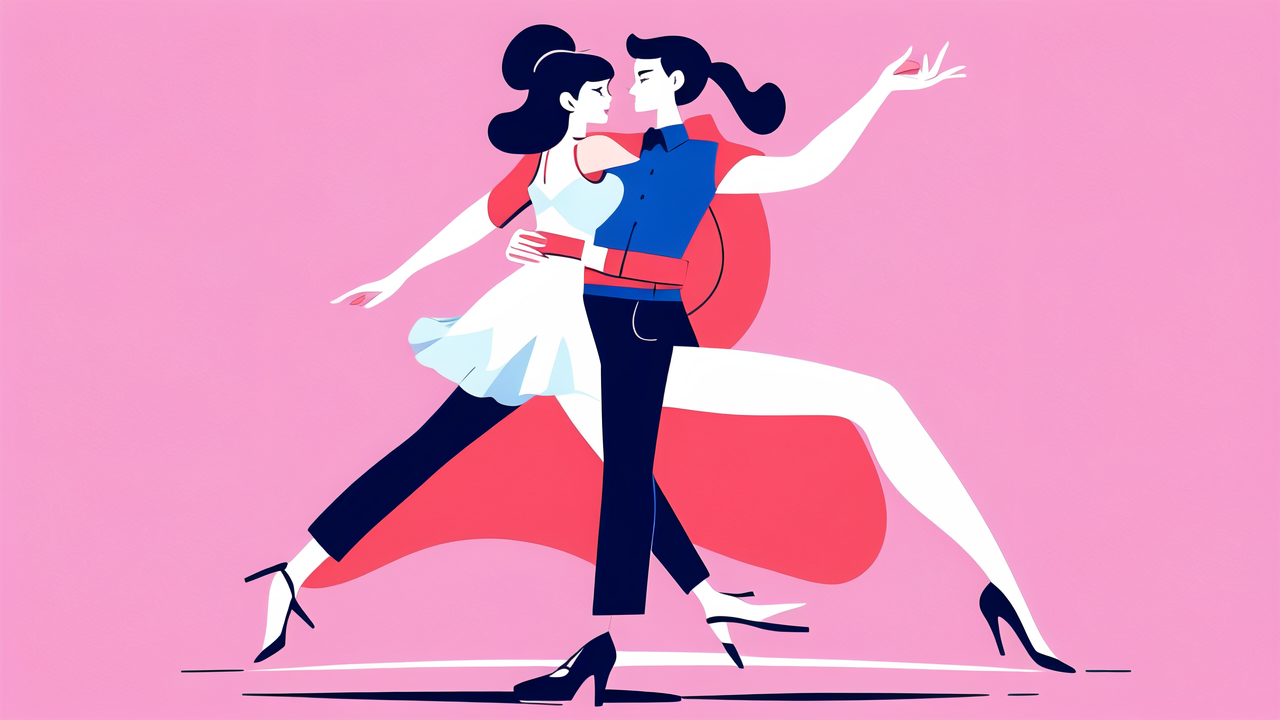The Rise of Women's Ballroom Dancing: A Historical Perspective
Origins and Evolution of Ballroom Dancing
Ballroom dancing began as social dance in the royal courts of Europe. Over centuries, it evolved with social shifts. Different styles emerged such as Waltz and Tango. It was once a symbol of upper-class status. Now, it is popular across all social strata. Women have played a key role in its evolution. Their influence is evident in the elegant costumes and dance moves of today's ballroom scene.

Pioneering Women in Ballroom History
The ballroom scene has seen many pioneering women. They broke barriers and set trends. Women like Irene Castle changed fashion in dance. She wore shorter skirts for freedom of movement. These trailblazers also fought for respect in a male-dominated field. Mabel Lee, another icon, pushed for more female choreographers. They carved paths for the women that followed in dance. Thanks to them, ballroom became a space of grace and strength. So, we celebrate these women and their lasting impact on the dance world.
The Influence of Ballroom Dancing on Women's Lives
Building Confidence Through Dancing
Ballroom dancing does more than just improve physical fitness. It also boosts self-esteem. As women master complex steps, their confidence soars. With every dance, they shine brighter, both on and off the dance floor. Many women report feeling more poised and self-assured after dancing regularly. This confidence often spills over into their daily lives, improving work and personal relationships. In short, ballroom dancing empowers women to stand tall and feel proud.
Empowerment and Personal Growth
Ballroom dancing is a powerful tool for women’s empowerment. It fosters self-expression and resilience. Many women have found that as they dance, their self-esteem soars. They learn to make quick decisions on the dance floor. This enhances their personal growth. Dance routines require discipline and dedication, which translate into life skills. As women master new moves, they also develop a sense of achievement. Dancing also encourages women to take leadership roles, often guiding partners through routines. This can empower them in other areas of life. Through ballroom dancing, women carve a space where they're celebrated for their strength and grace.
Current Trends in Women's Ballroom Dancing
The Impact of Social Media and Modern Technology
Social media has transformed women's ballroom dancing. Platforms like Instagram and TikTok spotlight dancers worldwide. They share clips, showcase techniques, and offer tutorials. This exposure has sparked global interest. More young women see ballroom as trendy and vibrant, not outdated. Tech also aids training. Apps and online workshops make learning easy. Dancers connect, forming a lively, supportive community online. They inspire and push each other towards greatness. Virtual reality may be the next frontier. It could let dancers train and compete in 3D spaces. Today's tech is shaping tomorrow's ballroom scene.
Future Outlook: Competitions, Choreography, and Community Building
The world of women's ballroom dancing is always moving. New trends are shaping its future. Competitions are now global events. Dancers from all places come to these grand stages. They show skill and grace. Choreography too is evolving. Moves are becoming more complex and storytelling is key. Dancers collaborate, forming strong links. They create dances that touch hearts. Communities thrive around these gatherings. Online forums and local clubs help them grow. Here, dancers support one another. They share tips and celebrate together. This sense of community is precious. It forms the heartbeat of ballroom dancing. As we look ahead, we see more growth. We expect new dance styles to emerge. More events will likely be live-streamed. Fans will enjoy dances from anywhere. The future of women's ballroom is bright. It is a future of continued expression and connection.
